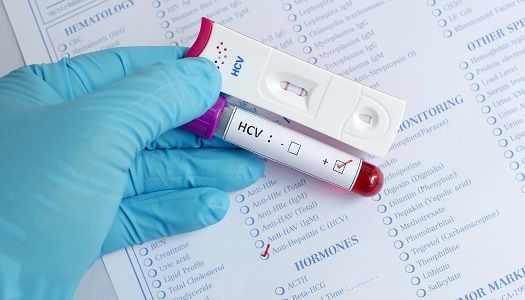Article
Hepatitis C Screening Update Could Increase Liver Donors
Author(s):
Nucleic acid testing indicates whether a virus is present by detecting and amplifying its RNA or DNA.

An updated approach to screening liver donors for the hepatitis C virus (HCV) could make more organs available for non-infected patients — including grafts from intravenous drug users, new research suggests.
“A liver donor’s hepatitis C status should be defined by NAT testing rather than antibody testing, since it is a more accurate measure of active infection,’’ Khurram Bari, MD, Assistant Professor of Medicine, University of Cincinnati in Ohio, told MD Magazine.
Nucleic acid testing (NAT) indicates whether a virus is present by detecting and amplifying its RNA or DNA. If the NAT is negative, there’s a much lower risk of HCV transmission. Antibody testing, in comparison, shows that there has been an HCV infection at some point, but does not specifically indicate if the infection is current.
With breakthroughs in HCV treatment and rising rates of intravenous drug use, more donors are HCV antibody-positive but NAT-negative, the researchers noted.
Until now, though, the risk of HCV transmission from the liver grafts of these donors to HCV-negative recipients had not been studied.
“A potential opportunity to expand the donor pool would be through the offering of organs from these individuals, which are otherwise reserved for HCV- infected recipients, to any patient on the transplant waiting-list,” researchers wrote.
Such organs have generally been discarded if an HCV viremic recipient is not available.
Based on data from the Organ Procurement and Transplantation Network (OPTN), between 150 and 200 antibody-positive/NAT-negative liver grafts were available in 2016, Bari said.
To estimate the incidence of HCV transmission from such donors, Bari and his team followed 26 HCV-negative liver transplant recipients. Twenty-five of them were HCV antibody-negative and one was NAT-negative. One of the recipients died 18 days after transplantation.
The patients received a liver graft from donors who were HCV antibody-positive but serum NAT-negative between March 2016 and March 2017. Fifteen of the donors had died from a drug overdose.
HCV transmission occurred in 4 of the recipients, or 16% of the remaining 25, at a median follow-up of 11 months. All of these recipients received livers from a donor who’d died of a drug overdose.
Three of these patients were treated with direct acting antiviral (DAA) therapy. Two achieved sustained virologic response (SVR); SVR analysis was pending for a third. The fourth underwent retransplantation after the initial graft failed and died from complications without receiving DAAs.
“Although one time negative-NAT testing did not completely rule out risk of HCV transmission and resulted in 16% of transplant recipients acquiring HCV, the expected HCV transmission from a NAT-positive donor would be 100%,” Bari said.
The study showed donors 35 years old or younger were more likely to transmit HCV infection. Larger cohorts will be needed to identify additional risk factors, Bari said.
The most significant outstanding question is how HCV is transmitted through antibody-positive/NAT- negative donors, Bari said.
“Further studies should try to investigate the underlying molecular mechanisms for such transmissions,’’ he said. “Moreover, we should also evaluate the long-term outcomes of recipients with antibody positive/NAT-negative grafts.’’
Transplant centers should look carefully at the data, in consideration of adopting the practice, Bari said. Wait-list mortality, MELD score at the time of transplant and availability of HCV antibody-positive/NAT-negative organs are all considerations.
As for the candidates, they must be educated on the risk of transmission, treatment options and insurance issues.
‘’Eventually it should be a team decision (between the clinicians and candidates) to use such organs,’’ Bari said.
The study, "Hepatitis C Transmission from Seropositive, Non-Viremic Donors to Non-Hepatitis C Liver Transplant Recipients," was published online in Hepatology this month.





